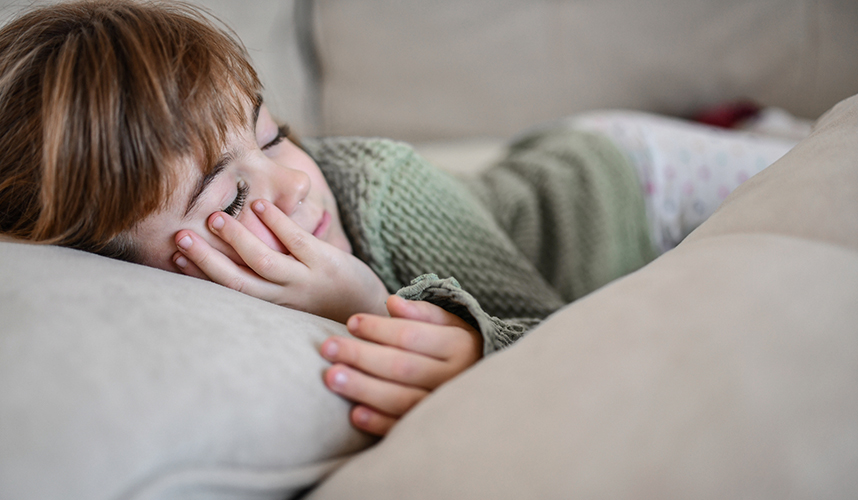Everybody knows our children need sleep for optimum health. During sleep the conscious mind is at rest, and the parasympathetic nervous system takes care of restorative functions of the body which is why we feel refreshed when we wake up.(1) Pandit Acharya, in his book, Breath, Sleep, The Heart and Life suggested that a good sleep each night is necessary for health but that our modern society also needs to learn how to extend this restful state experienced in sleep into our daily lives.(2)
At a time when communications technology threatens to overwhelm all of us and rob us of our rest, Acharya’s teachings become more pertinent. He says two of the most vital processes of life: digestion and elimination should work effectively for good health. For these to work effectively, we need periods when our breathing is regular and unhurried. The elimination here is not just the removal of food waste from the body but is the removal of waste at a cellular level; the removal of CO2 from the cells so avoiding toxicity in the body and therefore resulting in better health. Anything that impedes this, results in varying levels of toxicity and the main impediment to this is the brain.
The brain is the bully of the body. When we are conscious it demands the resources of the body. Think of how hungry you used to be when swotting for exams, and how tired it made you! Remember how the exams interfered with your digestion making you feel sick sometimes? The brain commands all the attention of the body’s mechanisms and in a society where being brilliant or at least clever is important on a daily basis that’s a lot of brain drain on the body!
How can thinking be bad for you? Of course it’s not a bad thing but when a person is merely thinking, Acharya says, with each thought he is generating a motor impulse. This translates to muscles of his body; eye muscles and nerves as he mentally localises things in mental places. As he thinks through situation after situation, jerky currents of electricity run from the brain to the body causing spasmodic muscular contractions. If the thinker is excited, then breathing may become erratic; each held breath means the waste product CO2 is being held in the body.
Where a child is doing physical activity while thinking, the body at least benefits from increased muscular activity so encouraging circulation and blood flow, decreasing the chance of toxicity.(3) No such benefits can be obtained through sitting with computers, mobile phones, hand held games or watching TV. I list them generally under the term “screens”; we are besieged with them and a natural mistake in Western society is to view these as a means of relaxation. Our children need to be aware that these are not relaxation tools. These screens are tools of the bully brain; demanding eye and hand coordination and causing muscle reflexes to jump about all over the body, requiring blood and oxygen and upsetting the digestion and elimination. There is no benefit of proper physical exercise to counteract the damage. Of course the Wii games do encourage some movement although this is jerky and restricted.
Of more concern, if a thrilling movie or football match is being watched on the TV or a difficult computer game is played, the adrenal glands pour adrenaline and cortisol into the body. This stimulates the thyroid and the pituitary gland to release their secretions all in readiness for fight or flight as the body knows it.(4) However these stress hormones have no outlet and just sit in the body. Is this the reason children are so moody after sessions of screen time? It is easy to see that on a regular basis and over long term without counteractive measures, this aggravation of the body may lead to a state of toxicity. We can’t expect our children to not experience excitement of course but it’s obvious that screen time should be minimised and our children taught how to rest.
The natural environment is more conducive to rest being easier on the senses than a cityscape with its lights, noises and signs continually commanding attention. To persuade my teenager and eleven year old away from the TV I usually suggest a walk in the woods or park without targets and deadlines or if the weather is good we can just chill out on the grass in our own garden and chat!
Young children rest naturally through play where their play is unstructured. For example, their conscious mind gives up to the senses while playing in mud, or with water or building sandcastles; the less structured an activity, the more they are resting. Rhythmical tasks which are not too difficult such as baking or kneading bread, gardening or free form painting or sculpting (play dough for the younger children) all lull the body into easy regular breathing.
We cannot control our body systems with thoughts but when confronted with stressful situations we can control our sensory response. On a general note, Acharya advises a sense of play in doing all things. Teach our children not to take things so seriously; to retain lightness as much as possible. Certainly through stressful situations, show them not only how transient things are but how everything has its time and place; restore the body as quickly as possible to ease by taking a breath and exhale through the emotions which threaten to overtake. This exhalation is the same that a warehouse man takes before he lifts a heavy package; it is a resistance to gravity and this method can be used against any friction in life; physical or mental.
Methods of relaxation
Of course there is no reason not to introduce the easiest forms of meditation to our children. Such a tool will be invaluable to them as they grow as a means of developing their full potential as well as aiding their health in the simplest way. Staring into a fire or a candle flame is a meditative past-time and very relaxing. An easy way to convert this to proper meditation is to ask the child to concentrate only on the flames and not to let his/her mind wander, bringing the thoughts gently back to the flames each time.
Yogic sleep is a method of relaxation.(5) While the child is lying down, palms up, legs apart, ask them to tense parts of their body and relax them in turn starting from the feet up towards the head. Finally, have them tense their facial muscles and relax them while exhaling with the sound “aah”. Taking children through a visualisation while they are lying down can be very restful and meditative; asking them to imagine they are an animal or insect traversing through some visualised landscape. These methods are outlined in more detail in Juliet Pegrum’s book Yoga Fun which is an easy instruction on yoga for children.
We all love to see our children doing well on the stage or the sport’s field and of course in class but I think we should learn to enjoy our kids resting too. Stress-related disease is ever-increasing and our society needs to value this aspect of health and incorporate it in its education systems. I personally like to see my daughter hanging out with her friends on the common; sitting on the grass, laughing and joking. Of course I would like to take their phones off them all but the ensuing “verbal” and protest would be counter-productive to their restful state of mind – and mine!
REFERENCES: 1.Robert Haley; epidemiologist. Study University of Texas, SW Medical Centre, Dallas 2. Pandit Acharya; Breath, Sleep, the Heart and Life, 3.ahajournals.org/cgi/content/full/94/4/857 4. wikibooks.org/wiki/Demystifying_Depression/The_Stress_System 5. Yoga Fun; Juliet Pegrum, CICO Books







